High Heat-resistant and Low Thermal Compaction Glass Substrate: OA-31
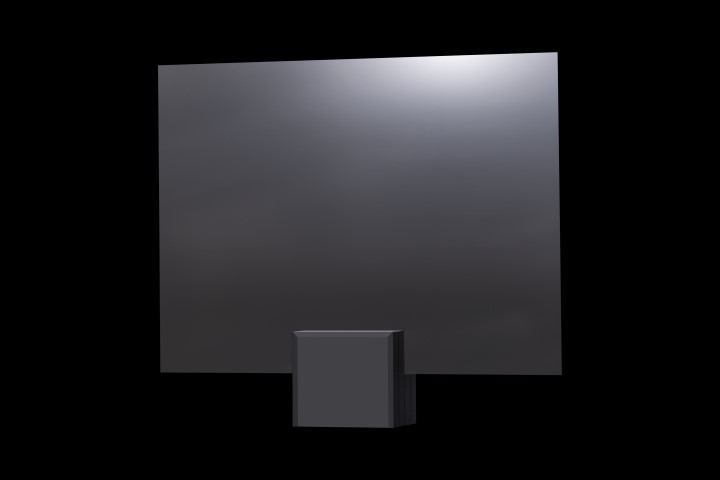
Low thermal compaction glass for next-generation displays
Developed as a glass substrate for LTPS displays in smartphones and mobile devices, this low thermal compaction glass significantly reduces shrinkage during heat treatment compared to conventional products. With outstanding surface quality and uniform thickness achieved through the overflow process, it is an ideal substrate for next-generation displays and flexible OLED displays.
Applications
-
Smartphone displays
-
Mobile device displays

Features
-
Low thermal compaction
Offers excellent thermal dimensional stability in ultra-high-temperature processes such as LTPS process. -
High Young's modulus
Resistant to deflection and deformation, ensuring stability as a flat glass. -
Superior optical properties
High transmittance and exceptional transparency. -
High surface quality
Smooth surfaces achieved through the advanced overflow process techniques. -
Excellent thickness uniformity
Overflow molding ensures remarkably consistent thickness.
Specifications
Thermal Shrinkage
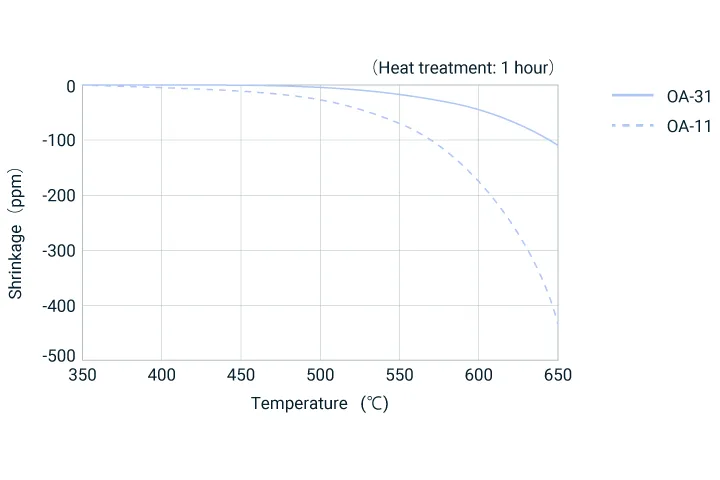
Transmittance
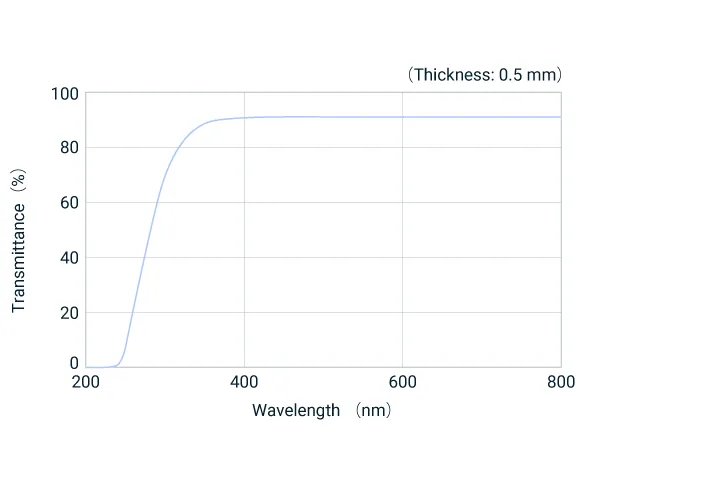
Properties
| Properties/Glass code | OA-31 | ||
|---|---|---|---|
| Density | ×103kg/m3 | 2.64 | |
| Coefficient of thermal expansion | 30~380℃ | ×10-7/K | 39 |
| Strain point | ℃ | 750 | |
| Young's modulus | GPa | 83 | |
| Poisson's ratio | 0.25 | ||
| Vickers hardness | Hv | 680 | |
| Volume resistivity Logρ | 350℃ | Ω・cm | 13.2 |
| Dielectric constant | 1MHz, 25℃ | 5.9 | |
| tanδ | 1MHz, 25℃ | 0.002 | |
| Transmittance | λ=550nm | % | 91 |
| Refractive index (nd) | 587.6nm | 1.53 | |
| Chemical durability | 10%HCl(80℃-60min) | No surface alteration | |
| 63BHF(20℃-3min) | No surface alteration | ||
| Alkali oxide content | wt% | 0.1 or less | |
| As, Sb content | wt% | Not present (less than 0.1) | |
Need More Details? Connect with Us!
Related Products
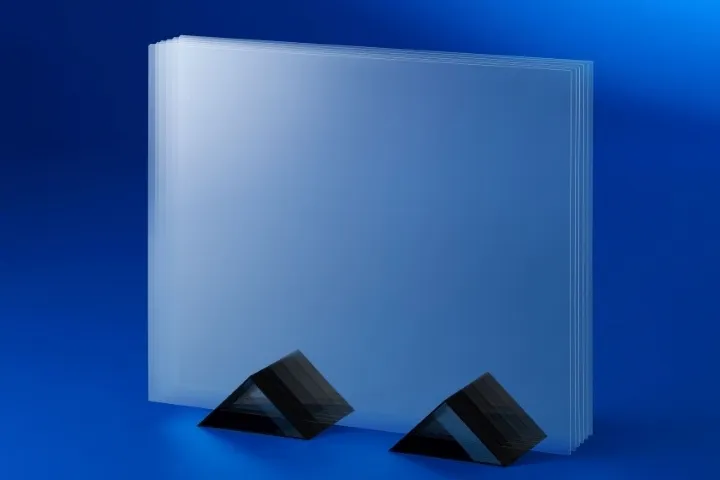
Alkali-Free Glass Substrate: OA-11
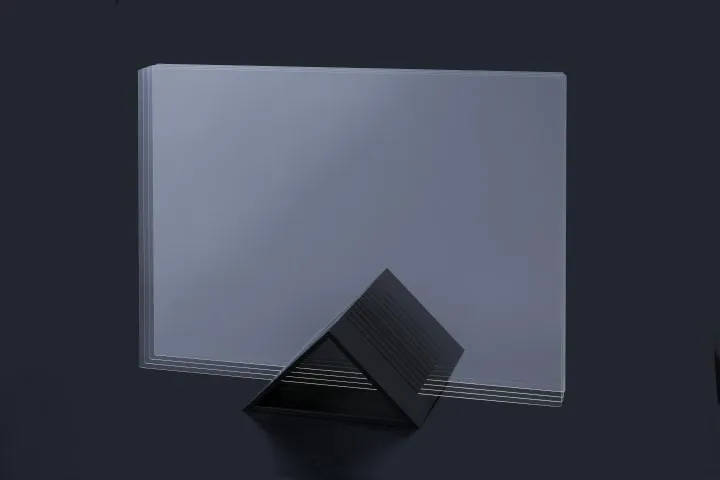
High Rigidity and Low Thermal Compaction Glass Substrate: OA-20
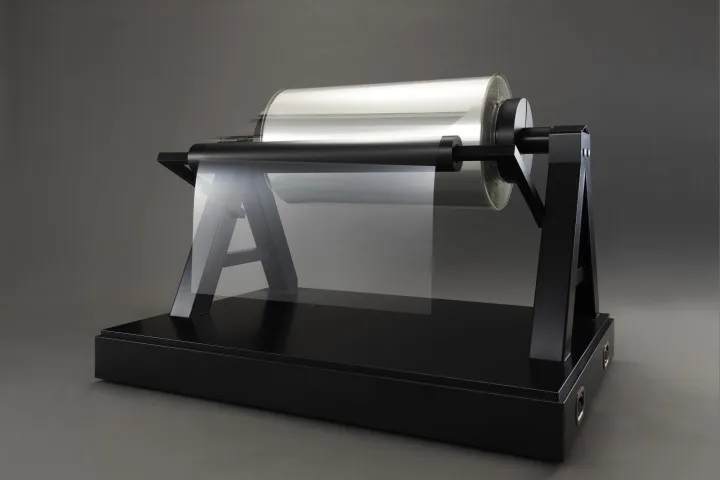
Ultra-thin Glass: G-Leaf™
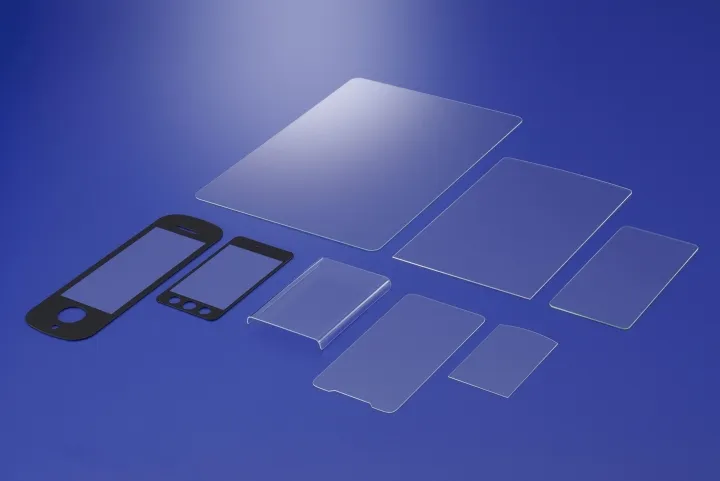
Glass for Chemical Strengthening: Dinorex™
Find Similar Products
Industry
Functions and Characteristics
Shape